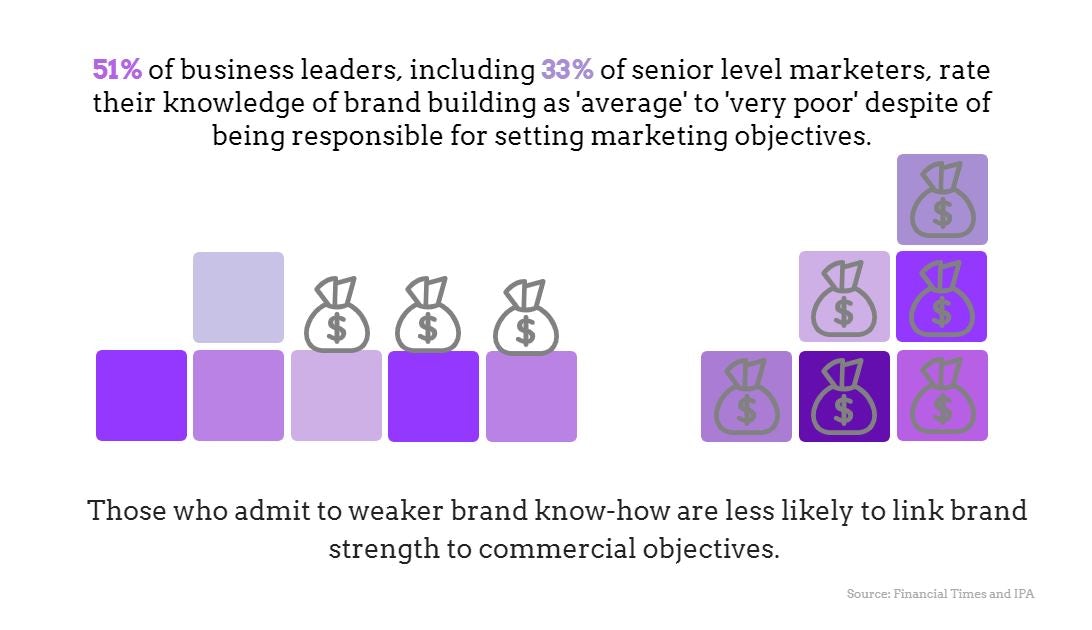Creativity and effectiveness, brand building, voice commerce: 5 killer stats to start your week
From the ‘broken’ link between creativity and effectiveness to a lack of understanding of brand building among the C-suite, we arm marketers with all the numbers they need to tackle the week ahead.
Business leaders lack confidence in brand building
More than half (51%) of business leaders, including 33% of senior level marketers, rate their knowledge of brand building as ‘average’ to ‘very poor’ despite of being responsible for setting marketing objectives.
Those who admit to weaker brand know-how are less likely to link brand strength to commercial objectives. Some 73% of those who rate their knowledge of branding building as high believe brand strength helps reduce price sensitivity, compared to 57% of those who don’t. The split is similar for establishment of new revenue streams – 79% to 58% – and business resilience – 78% and 48%.
This lack of knowledge of how brands are built is also impacting the balance between long- and short-term marketing investment. Some 83% of those who have high brand understanding understand the need for a balanced investment approach, compared to just 49% with low brand understanding.
Less than a third of organisations use ‘brand health’ metrics such as salience, distinctiveness and favourability at board level. And just 20% of non-marketers think strong brands are ‘very important’ for ‘increased profitability’ – one of the top priorities among 70%.
Overall, 33% of board members believe reporting cycles for marketing performance are getting shorter, versus just 12% that think they are getting longer.
Source: Financial Times and IPA
Link between creativity and effectiveness ‘broken’
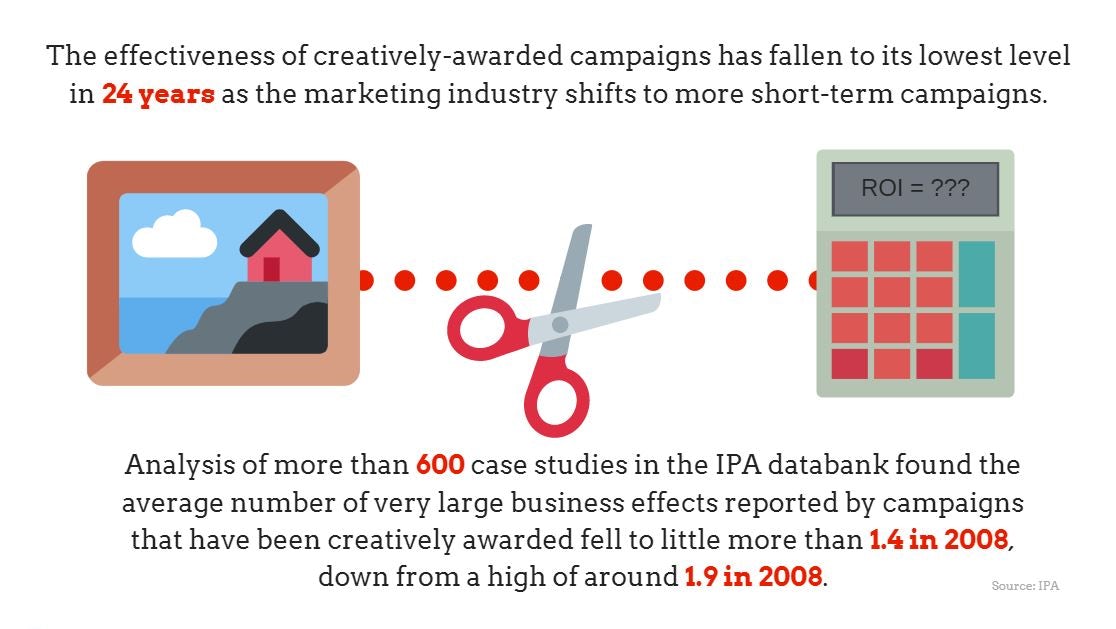
The effectiveness of creatively-awarded campaigns has fallen to its lowest level in 24 years as the marketing industry shifts to more short-term campaigns.
Analysis of more than 600 case studies in the IPA databank found the average number of very large business effects reported by campaigns that have been creatively awarded fell to little more than 1.4 in 2008, down from a high of around 1.9 in 2008.
READ MORE: Link between creativity and effectiveness ‘broken’ as short-termism rises
There is also declining effectiveness among all IPA case studies, with the average number of very large business effects down from almost two in 2008 to around 1.3 in 2018.
The report puts the declining effectiveness down to a rise in short-termism. The proportion of campaigns that were short-term (evaluated over periods of six months or less) has risen from around 10% in 2002 to 25% in 2018.
Source: IPA
The impact of diversity in advertising
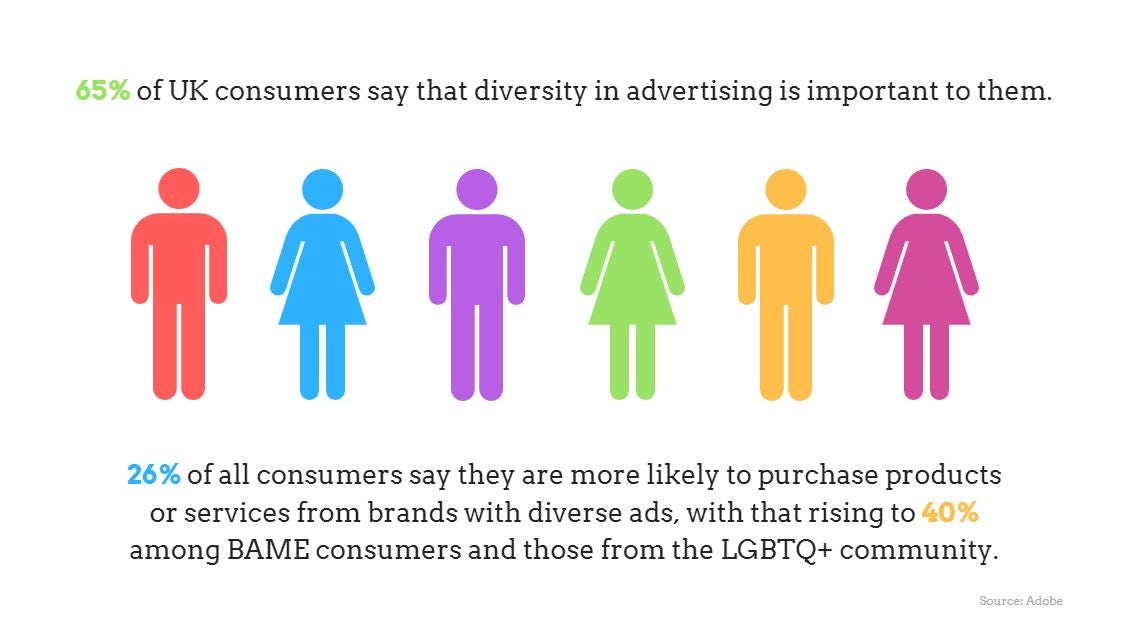
The majority (65%) of UK consumers say that diversity in advertising is important to them. More than a quarter (26%) of all consumers say they are more likely to purchase products or services from brands with diverse ads, with that rising to 40% among BAME consumers and those from the LGBTQ+ community.
More than two-thirds (69%) of consumers believe ads have become more diverse, with free-to-air and streaming networks seen as the most diverse video advertising medium. Retail performs best, with 29% seeing it as the industry that offers most diversity in its advertising, followed by media and entertainment on 28% and food on 26%.
The brands that are top of mind for diversity in their ads are Coca-Cola on 20%, Nike on 19% and Apple on 17%.
Source: Adobe
How consumers are using voice for commerce
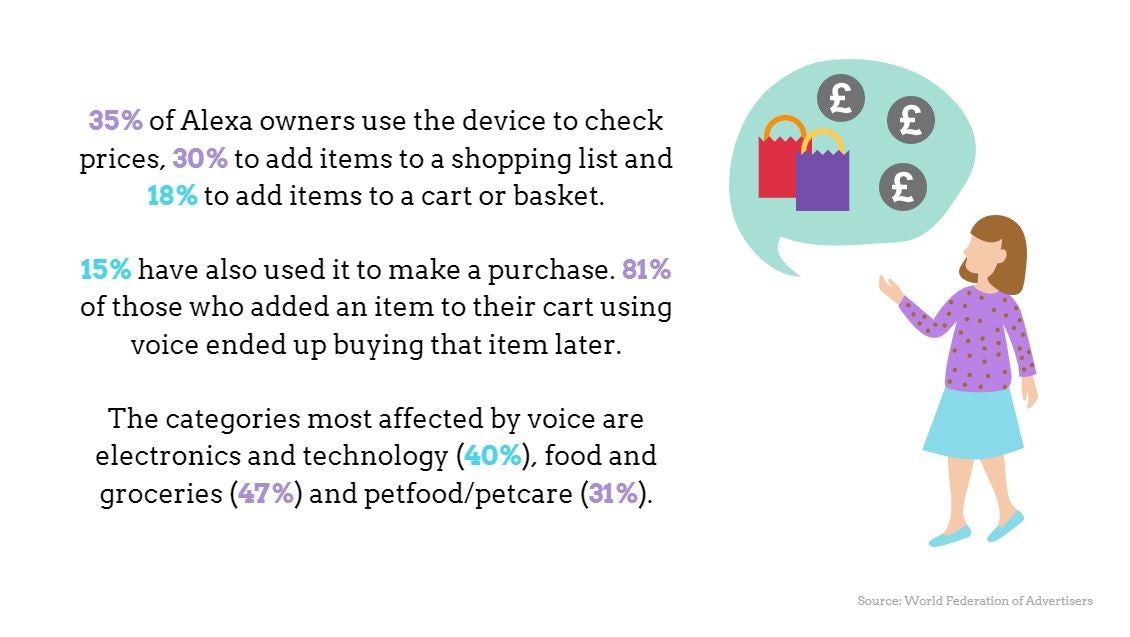
A survey of 1,500 consumers that own an Alexa voice device found that 35% of them use it to check prices, 30% to add items to a shopping list and 18% to add items to a cart or basket.
Fifteen percent have also used it to make a purchase. Some 81% of those who added an item to their cart using voice ended up buying that item later.
The categories most affected by voice are electronics and technology (40%), food and groceries (47%) and petfood/petcare (31%).
However, many are yet to use their Alexa for voice commerce, with 36% saying they haven’t had a need to do so yet and 32% saying they haven’t got round to it.
Just 14% of marketers see voice as either a ‘high’ or ‘top’ priority but 55% expect its important to increase ‘somewhat’ or ‘significantly’ over the next three years.
Source: World Federation of Advertisers
Door drop industry remains stable despite GDPR
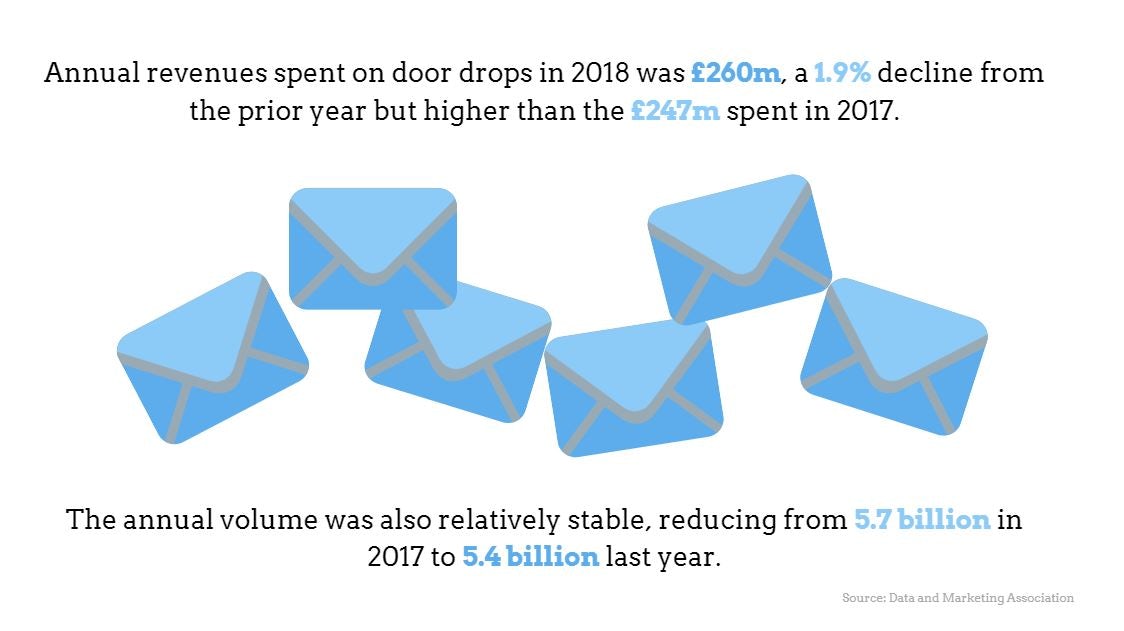
Annual revenues spent on door drops in 2018 was £260m, a 1.9% decline from the prior year but higher than the £247m spent in 2017. The annual volume was also relatively stable, reducing from 5.7 billion in 2017 to 5.4 billion last year.
Per household, the number of door drops has reduced to less than four (3.78) per week. The total weight also fell by more than 4,000 metric tonnes, and there has been an 8% reduction over the past five years.
JICMAIL (the new currency for mail) figures show that on average an individual door drop is seen by 1.05 people in the home and interacted with 2.77 times over the course of a month.
Source: Data and Marketing Association

